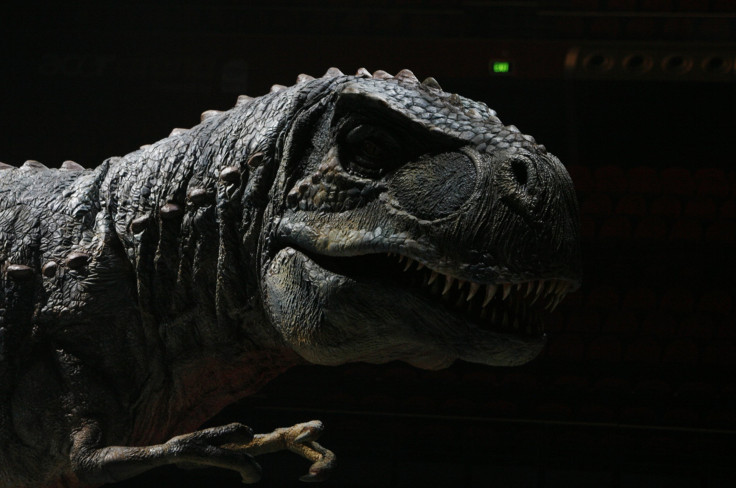New Study Suggests Dinosaurs Were Neither Warm-Blooded Nor Cold-Blooded

A new study has attempted to answer a long-standing question about dinosaurs, which first appeared on Earth nearly 231 million years ago.
Many remains of dinosaurs have been discovered in different parts of the world over the years, providing scientists with tons of information about the prehistoric beings, which dominated the planet for more than 100 million years. However, scientists were unsure whether these animals were warm-blooded or cold-blooded, until now. The latest study, by researchers at the University of New Mexico, or UNM, claims that dinosaurs fit in between warm-blooded mammals called “endotherms” and cold-blooded reptiles called “ectotherms.”
“Most dinosaurs were probably mesothermic,” John Grady, a graduate student at UNM who led the research, said in a statement. “A thermally intermediate strategy that only a few species – such as egg laying echidnas or great white sharks – use today.”
According to the scientists, the study focuses on the relationship between growth rate and metabolic rates in animals and then extends the same to long-extinct animals such as dinosaurs. Grady developed an extensive database that correlates energy needs with growth, which was used by researchers to demonstrate that the dinosaurs required both energy and higher body temperatures to grow faster.
The researchers also used growth estimates for extinct dinosaurs to estimate the metabolic rates of the animals. All these data eventually helped them conclude that dinosaurs clearly belonged to a category in-between that of modern mammals and reptiles.
According to the study, published in the journal Science on Thursday, the growth rate of feathered dinosaurs and primitive birds was slower than that of modern birds. However, dinosaurs grew significantly faster than modern reptiles.
“This higher energy use probably increased speed and performance,” Grady said, in the statement. “Mesothermic dinsoaurs were likely faster predators or better able to flee from danger than the large reptiles found earlier in during the Mesozoic.”
The Mesozoic era, also called the age of reptiles, was the time from 248 million to 65 million years ago. The era lasted about 180 million years and is divided into three periods, including the Triassic, the Jurassic and the Cretaceous.
According to the scientists, lower metabolic rates in dinosaurs compared to mammals helped them survive on less food, which also may have contributed to their enormous size.
“For instance, it is doubtful that a lion the size of T. rex would be able to eat enough wildebeests or elephants without starving to death,” Grady told Live Science. “With their lower food demands, however, a real T. rex was able to get by just fine.”
© Copyright IBTimes 2024. All rights reserved.





















